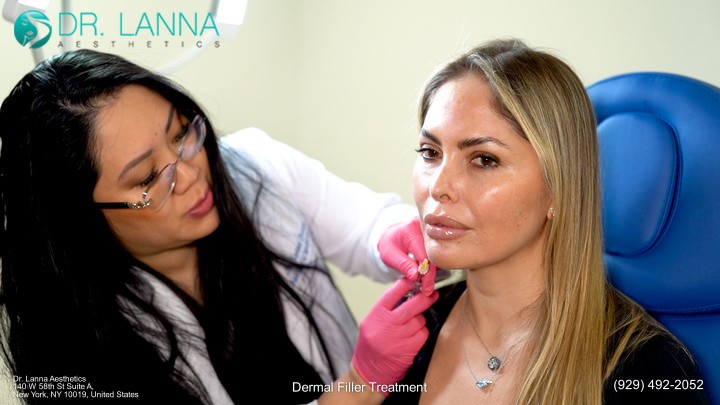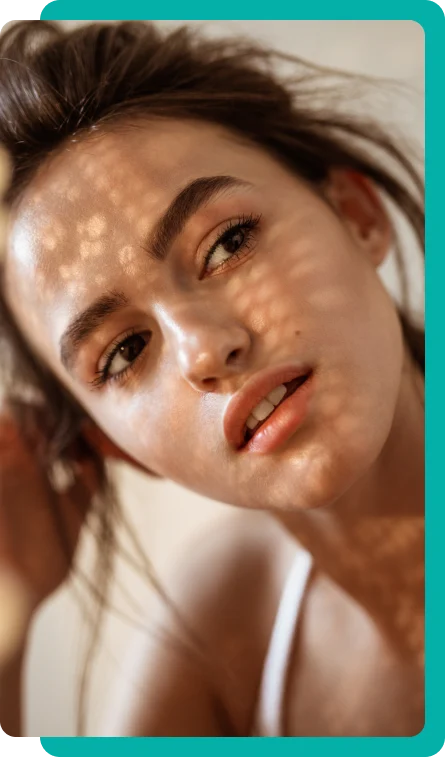While beauty treatments like dermal fillers aim to enhance your features, that doesn't mean that they're replacements for makeup; some might still need to recede certain features or bring them forward without the need for surgical or non-invasive treatments. But because of the effects that dermal fillers can have on the skin, a common concern for people is how long they need to wait to apply makeup after a dermal filler injection.
So how long should you wait after dermal fillers before putting on makeup? The good news is unlike a medical procedure, there's no need to hold off on the mascara until a few weeks after treatment - most providers generally agree that a few days to a week is enough for the healing process. Of course, this can vary depending on your injection sites, but there are plenty of things you can do about this as well.
Dermal fillers are part of the newer types of aesthetic treatments, joining the other array of treatments like Botox injections and body contouring. As a non-invasive aesthetic treatment, patients can generally expect a fairly painless procedure with little to no recovery time required, allowing them to resume their normal activities without having to worry about experiencing adverse effects.
However, that doesn't mean that your body can't react to the effects of dermal filler. Because filler needs to be injected underneath your skin, your dermal filler treatment may require multiple injections to complete your treatment plan. That means a lot of injections - and a lot of direct channels past your skin.
Your skin serves as a crucial shield to prevent your body's exposure to harmful or irritating chemicals - and that can sometimes include the ingredients in makeup. Unless you're using all-organic compounds (and even if you are) applying makeup to injections sites is generally a very bad idea.
Modern makeup has progressed enormously in the past few decades, but these innovations often use stronger and stronger compounds to get the effects you want. When you add the fact that makeup can sometimes take a lot of effort to remove properly, it becomes clear why most providers generally don't advise you to put on makeup shortly after dermal filler injections.
So that leaves the question: how long do you need to wait? The answer will mostly depend on two things:
This wasn’t a huge concern in the past, but with many more providers offering alternative injection techniques for dermal fillers, it's become a more prominent issue with patients and providers alike.
Injecting dermal fillers used to be done with hypodermic needles, the usual kind that you'd use for most medical and cosmetic procedures. However, in recent years have started bringing other techniques for applying dermal filler, most notably using the microcannula technique.
Microcannulas are blunt-tipped and flexible needles that push - not pierce - their way through your skin, which allows them to nudge tissue, blood vessels, and other essential layers out of the way. They have a few advantages compared to traditional needle applications, like:
In theory, this injection technique should leave you less likely to experience side effects like swelling, bruising, or bleeding after your filler injection - all of which can be extremely helpful to anyone who's looking to fast-track their skin back to normal so they can put makeup on again.
However, this is a fairly uncommon concern since the number of providers that offer microcannula services for dermal fillers isn't that many, and the FDA-approved brands that can be used for microcannula application are even fewer. If you are worried about the injection technique and how much it can affect your skin, it's a conversation that you're better off having with your provider.
This is the more common concern that many patients and providers run into since dermal filler can be applied to many areas on the face and body. The injection site determines how effective your results are, but they also play a large role in how fast you can recover from the treatment.
Injection sites also determine how much filler material is used in your treatments - more sunken areas like tear troughs or areas that need more volume like the cheeks will often require more filler. However, the specifics of these are best discussed with your provider.
Injection sites matter since the more injections you need, the higher the risk of infection or other complications that may develop from your procedure. In general, here are the things you need to watch out for with injection sites:
As far as makeup is concerned, the rule of thumb is fairly simple: if you've had plenty of injections in the area, it's best to not apply any makeup on it at all until you're sure the recovery process is over. Not only does this decrease the risk of infection, but you're also less likely to irritate the skin.
This goes for any type of makeup - light makeup isn't exempted from this rule. Because the primary issue here isn't about the amount of makeup, but rather the makeup itself, you should never apply makeup to freshly-injected areas.
Dermal filler treatments already enjoy some of the fastest recovery periods compared to other cosmetic procedures, only taking until a week for your body to fully recover. But if for some reason you can't really wait that long, there are a few things you can do to speed up the recovery process:

Dermal filler injections are a non-invasive treatment that doesn't take too much of a toll on your skin, but it does require more than a few hours after treatment for your injection sites to not flare up when you put makeup on. Because makeup products can be made of a variety of chemicals which can increase the risk of infection or irritation on your injected skin, most providers will generally ask that you refrain from makeup for a couple of days after your injectable treatment.
Dr. Lanna Aesthetics has considerable experience in helping our clients regain and maintain their youthful appearance, using non-surgical cosmetic treatment options like anti-wrinkle injections and Botox injections. We can even combine cosmetic procedures like Botox treatment with dermal filler injections for better results, ensuring that even a busy person can find the perfect time to look good.
To learn more about how our skin treatments, cosmetic injections, or how our experienced practitioners can help you with concerns like the appearance of wrinkles, book a consultation with us now. You can contact us online via our website at https://doctorlanna.com/contact/ or call us at (969) 565-7539.

New Patients Enjoy $100 OFF on Tox or Filler Appointments!
*minimum 1 full syringe or minimum 25 units; Cannot be combined
